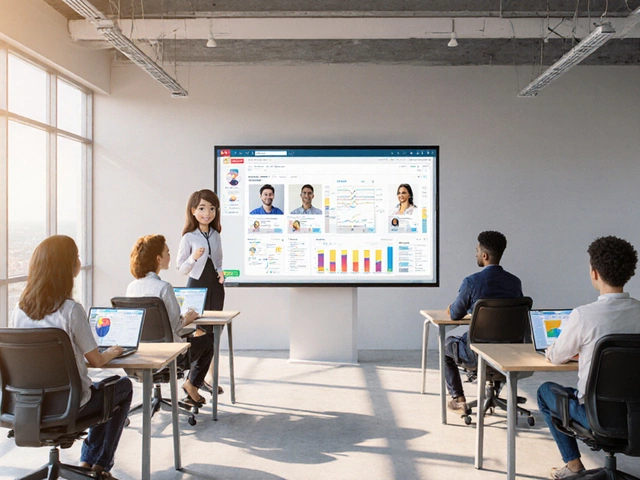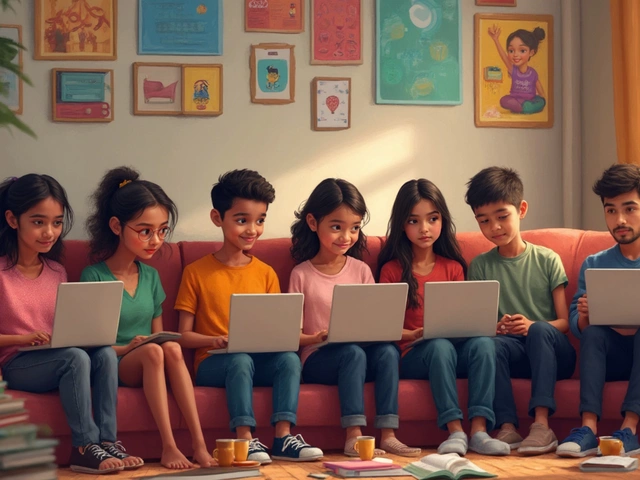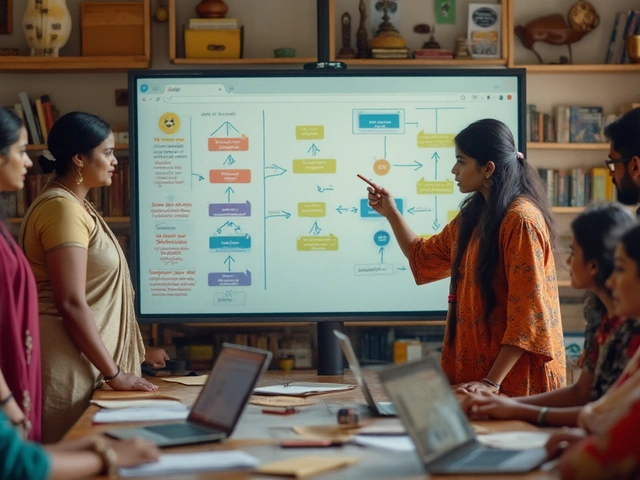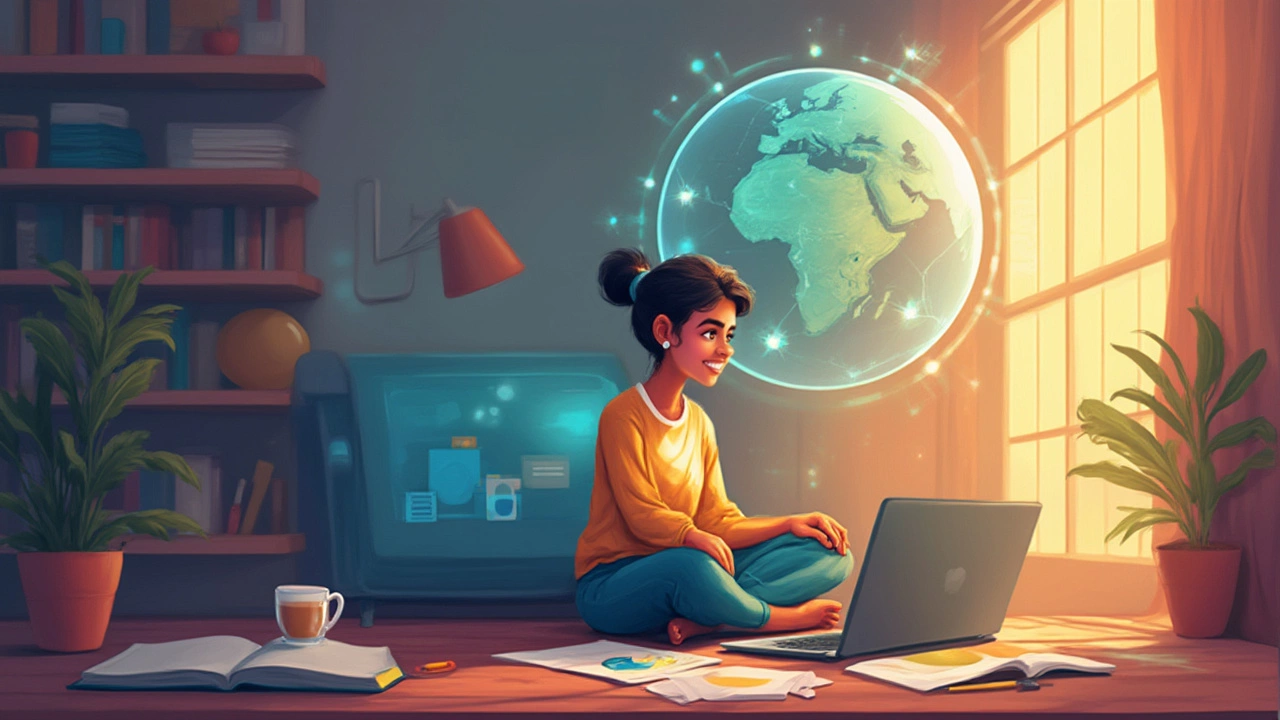
Imagine earning a degree from your couch or attending a class taught by a professor thousands of miles away. Not too long ago, this could’ve seemed like something out of a sci-fi movie. Now, it’s normal. One word sums it all up: distance education. It’s not just about taking a boring correspondence course. Distance education is a whole world of options, flexibility, and technology, reshaping how we think about learning. But, what exactly counts as distance education?
What Makes Distance Education "Distance"?
Distance education is any learning where you’re not physically present in a traditional classroom. Sounds simple, but dig a little deeper. It’s not just a Zoom call or a video on YouTube. True distance education connects you to teachers, materials, and peers when you’re all in different physical locations—and it brings rigorous, organized learning to your screen, mailbox, or device.
The whole point is separation. In the classic sense, distance education started with mail-in assignments. Think late-night radio lessons or VHS cassette courses from TV ads. Now? The separation is bridged by high-speed internet, smartphone apps, and video platforms. The main ingredients: a structured course, an instructor (yes, even if you never meet them in person), regular feedback, and ways to interact with fellow students digitally.
To be considered true distance education, a program usually ticks off these features:
- Instructor and student are separated by location for most or all classes
- Learning happens through an approved platform—like an accredited online school, virtual training, or even mail-based courses in areas without fast internet
- There are clear assignments, deadlines, and learning outcomes
- Communication is two-way—think discussion boards, video calls, emails, or chat apps
- Feedback from the teacher is built into the system
So, watching a TED Talk for fun? That’s not distance education. Finishing a semester of history via your university’s online learning portal? Now we’re talking.
The Key Types of Distance Education
When people say "distance education," they often only think of online college degrees. But, this learning style actually falls into a few categories:
- Synchronous learning: Everything happens live and in real time. Students and teachers log on at the same hour. Think virtual classrooms, interactive webinars, and live-streamed lessons where you can raise your digital hand to ask a question.
- Asynchronous learning: This is the ultimate in flexibility. You work through the material at your own pace. That might mean video lessons, forums, or email discussions, with no set login times. Most MOOCs (massive open online courses) fall into this group.
- Hybrid models: Sometimes, you get a blend. Maybe you have to attend a few live sessions, but also have blocks of self-paced, pre-recorded materials. This approach aims to offer structure while being flexible for people with jobs or family duties.
- Correspondence courses: Old-school but surprisingly still alive, these don’t rely on the internet. Lessons are mailed to students, who mail back assignments. This makes education possible for students without reliable web access.
Each type has its own vibe. Synchronous classes are closer to the traditional classroom feel, but asynchronous courses let you fit learning around your life instead of rearranging everything for school. Hybrid and blended models are everywhere right now—they try to balance structure and freedom as needs shift.

The Evolution: From Snail Mail to Global Digital Classrooms
Let’s get one fact straight: distance education isn’t new. Back in the 19th century, people were learning shorthand or foreign languages through the mail. In the 1920s, universities in the U.S. ran radio courses so people in rural areas could listen in. Suddenly, higher education wasn’t just for big-city residents. By the late 20th century, correspondence schools made it possible to get a diploma from home, which was a game changer in places without big campuses.
Then came the internet. Colleges started putting courses online in the late ‘90s. Fast forward to 2020: the pandemic hit, and just about every school on Earth tried moving classes online overnight. Now, even after in-person classes returned, millions of people prefer online options. Why? Flexibility, less commuting, and more choices.
Let’s see some hard numbers:
| Year | Global Online Learners | Top Country |
|---|---|---|
| 2000 | Under 1 million | USA |
| 2010 | Over 20 million | USA, UK |
| 2024 | Estimated 120 million+ | India, USA, China |
The growth is wild. More than half of college students in the U.S. say they’ve taken at least one online course. A 2023 survey in India found nearly 65% of young professionals have used online learning to upskill for work. That’s not a fluke—it’s a shift that’s here to stay.
If you think distance education just means low-quality learning, check the stats: hundreds of respected universities, including Harvard and IITs, offer full degrees online. Even employers are taking these credentials seriously, especially when candidates can prove the skills they claimed.
How Distance Education Platforms Shape Modern Learning
Say goodbye to dusty textbooks and GIF-heavy PowerPoint slideshows. Today’s e-learning platforms are sleek, intuitive, and interactive. They’re loaded with features that keep you on track—even if your cat is trying to nap on your laptop.
The backbone of most distance education? Learning Management Systems (LMS). These are platforms like Canvas, Blackboard, or Google Classroom, where students can read material, submit homework, join video classes, and chat in forums, all in one place. Some platforms, like Coursera or Udemy, let anyone sign up for courses from top schools or industry leaders.
- Discussion boards help you connect with classmates sitting continents away.
- Instant quizzes and feedback give you a quick check on your progress.
- Mobile apps make learning possible in waiting rooms, on buses, or during lunch breaks.
- Some platforms use artificial intelligence to recommend what to study next.
- Video lectures, live tutoring, cloud-based assignments—the list keeps growing.
What’s cool? A huge number of platforms now include accessibility tools. Voice-to-text, text-to-speech, and translation features help learners with disabilities or those studying in their second language. In fact, tech is closing the education gap in places where kids couldn’t go to school at all. Rural schools in India are using satellite internet to join in national science classes. This isn’t just a fancy perk; it’s giving access to millions who were locked out before.
But don’t forget—not all online platforms are the same. Look for programs that are accredited, with real teachers and clear outcomes. If the website promises instant diplomas for a fee alone, that’s a red flag.
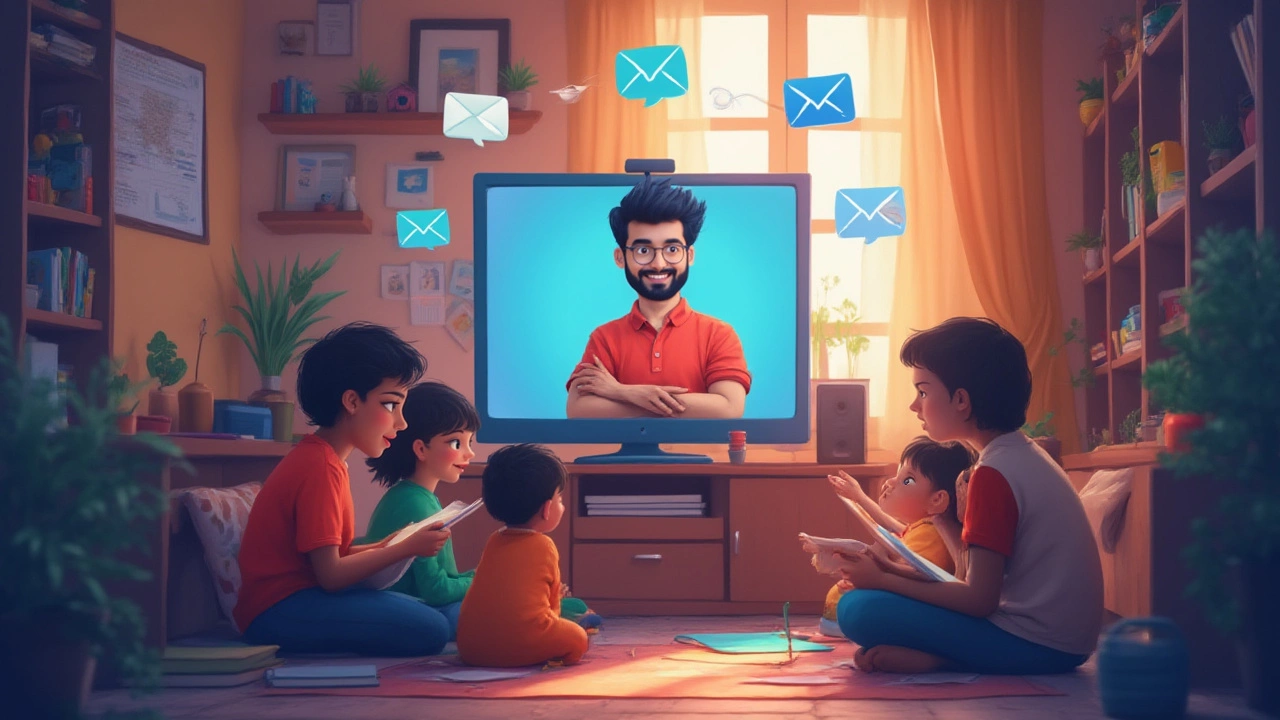
The Perks and Pitfalls: What You Should Know Before Choosing Distance Education
You might be thinking, "Should I try this or stick to traditional school?" It’s a personal call, but here’s what lots of people weigh up:
- Flexibility: This is the headline perk. You can learn at your own pace, fit study around work, and dig into lessons in pajamas. About 80% of distance learners say this is what drew them in.
- Access: Students in rural or remote areas, working professionals, or people with family needs can get an education they couldn’t before.
- Cost: With no need for travel, dorms, or on-campus services, many online programs end up cheaper. Some are even free. But read the fine print—some platforms have hidden costs like proctored exam fees.
- Diverse Courses: You can study French, Python, medieval history, or machine learning on the same device. The *strong* variety is unbeatable in modern distance education—niche courses that your local college will never offer can be found online.
But heads up, there are downsides:
- Isolation: Learning alone can feel lonely. It takes discipline and strong time management skills to stay on task when no one is watching.
- Technology Trouble: Not everyone has high-speed internet or a new laptop. Tech glitches and slow connections are real obstacles, especially in less developed areas.
- Distractions: Home has its own chaos—kids, chores, gadgets—so you need strategies to create a study zone. Making a schedule and sticking to it helps, along with turning off social media notifications.
- Quality Varies: Not every provider is legit. Check for accredited courses and look up student reviews before committing your time and money.
Tip: Ask about support services. Good programs offer student advisors, tutoring, and tech help. Some even hook you up with internship or job placement networks when you finish.
If you’re on the fence, try a free course first on a well-known platform. Sites like edX, FutureLearn, or Khan Academy let you test-drive distance learning on your schedule with no commitment.




